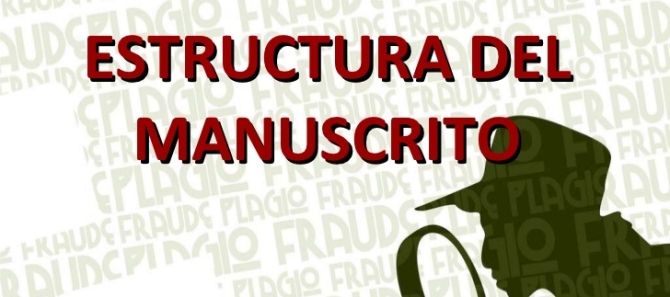Author: Ignacio Aguaded – Translation: Erika-Lucia Gonzalez-Carrion
Sending a paper to a magazine requires not only an original, novel and relevant research, but also taking care of the format and structure of the paper because the formal issues, together with the thematic, methodological and bibliographic, constitute a whole that explain in a great way the reasons for estimating / rejecting, in the first place, and after acceptance / rejection in a quality publication. Failure to attend carefully to the format of a paper is a clear distinction of a little rigorous researcher, who does not know how to assess the formal processes that, for a high-index publication, are key in the normalization of their evaluation flows.
In general, in any magazine of international recognition, two files must be submitted simultaneously: Presentation and cover, and Manuscript.
1) In the PRESENTATION AND COVER (“Title Page” and “Cover Leter”, in English) the original nature of the contribution is collected and the publication rights are partially or totally assigned, apart from specifying authors, sources of funding… This Document is key in the identification and is never visible to reviewers.
2) In the MANUSCRIPT, the first section, the METADATA, is extremely important. A paper, sometimes, generates sufficient causes for its rejection simply by its own title:
- The TITLE of the article must be concise and informative, with as many significant terms as possible.
- Regarding the AUTHORS (included in the Cover Leter), it should be kept in mind that the number must be justified by the subject, its complexity and its extension, justifying the original contribution of the team. The academic signature (scientific name) must be standardized in accordance with international conventions to facilitate identification in the main databases (https://bit.ly/2Dhk7Xu). It is mandatory to register with the International Registry of Researchers: ORCID (http://orcid.org).
- The RESUMEN / ABSTRACT in Spanish and English must be around 230 words, in order to be able to describe in a concise way the motive and objective of the investigation, the methodology used, the most outstanding results and main conclusions. The use of automatic translators is never accepted due to their poor quality.
- KEYWORDS / KEYWORDS should be based on a Thesaurus, with the most commonly used simple terms in the subject; for example, that of UNESCO. Only in exceptional cases new terms are accepted.

3) It is very important that, in the BODY OF WORK, the manuscripts strictly respect the structure of the journal:
- INTRODUCTION AND STATUS OF THE QUESTION. It must include the fundamentals and the purpose of the study, using bibliographic citations, as well as the review of the most significant and recognized literature on the subject at national and international level. The emptying in JCR and Scopus to publish in journals of these levels is very significant.
- MATERIAL AND METHODS. The sample and sampling strategies must be described, as well as the type of statistical analysis used. If it is an original methodology, it is necessary to state the reasons that have led to its use and describe its possible limitations.
- ANALYSIS AND RESULTS: The relevant observations must be described, without making value judgments, indicating the material and methods used, as well as the most relevant results of the research. The results will be presented in figures or / and tables in a logical sequence in the text, avoiding data redundancy.
- DISCUSSION AND CONCLUSIONS: The findings are collected, indicating the contributions and limitations, without reiterating data already mentioned. It is necessary to indicate the inferences and their limitations, including potentialities for future research, as well as link the conclusions with the objectives of the study, avoiding free statements and conclusions not fully supported by the work data.
- NOTES: They are considered exceptional and will always be at the end of the article (before References). Simple bibliographic citations (no comments) should go in the References.
- SUPPORTS: The Council Science Editors recommends that authors specify the source of research funding. In high-impact journals, priority is given to works backed by national and international competitive projects. In any case, for the scientific evaluation of the manuscript, it must be anonymized for initial evaluation, so as not to identify authors and research teams, which must be explained in the Presentation Letter and subsequently in the final manuscript.
- REFERENCES: Bibliographic citations should be reviewed in the form of references to the text. Bibliography not cited in the text should not be included. Their number must be sufficient and necessary to contextualize the theoretical framework, the methodology used and the results of research in an international research space. There will be presented alphabetically by the author’s first last name (adding the second only in case the first one is very common, and linked with a hyphen). Citations must be extracted from the original documents – preferably journals and to a lesser extent books – always indicating the initial and final page of the work from which they come, with the exception of complete works. Given the importance for the citation indexes and the calculations of the impact factors, the correct citation will be assessed according to APA Standard 7.0 (http://bit.ly/2JkuWs8), assessing that there are not only national references, but also also prestigious international journals (JCR / Scopus).

- KEY IDEAS / HIGHLIGHTS: In some journals, such as “Comunicar”, it is recommended to include at the end of the paper two or three paragraphs where the most original, relevant and innovative ideas of the work are summarized, highlighting its main contributions. They may be new paragraphs or literal text, drawn from the manuscript (not from the abstract).
In short, looking over the quality of the paper, in its structure, is to faithfully reflect quality research. The opposite is to give reasons to reject a work that unfortunately in its presentation does not reflect the originality of the research that supports it.
